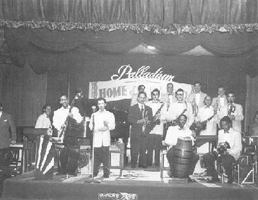
Home >> Music of the Caribbean >> Calypso
Calypso
One of the most popular forms of music in the Caribbean is, unquestionably, Calypso. Calypso is a style of music which traces its roots to Africa during the introduction of the slave trade.1 Throughout the years, Calypso has spread from the far reaches of Trinidad to the coasts of New York. Originating in the 19th Century in Trinidad, Calypso music began as a way for slaves to passively resist their masters through song and music. Calypso was shaped by not only the British aristocracy but also by Spanish and French influences in the island. At the time of its origin Calypso was mostly sung in French-Creole and was led by a leader, called a griot.2 Today Calypso music is still one of the biggest attractions at Carnival and several tents are set up to host competitions between calypso artists every year. Calypso took off in the early 20th Century during what has been deemed the “Golden Age” of Calypso and has continued throughout the late 20th Century.3 The most notable vehicle for Calypso music is the steel band. Invented after British colonials banned the use of drums; early pioneers found creative ways to make music. Originally through the beating of bamboo drums, also known as “tamboo bamboo”, this resourceful instrument would eventually give way to steel pans. The ability of these steel drums to produce different pitches was the primary reason for the transition from bamboo instruments to steel instruments. Today, these steel pans have evolved from the common cooking utensil to full out instruments ranging from tenor, to cello, to bass. An ensemble in contemporary times comprises several of these pans.4 Famous Calypso Artists Slinger Francisco Lord Kitchener Calypso Rose Notes:
|
